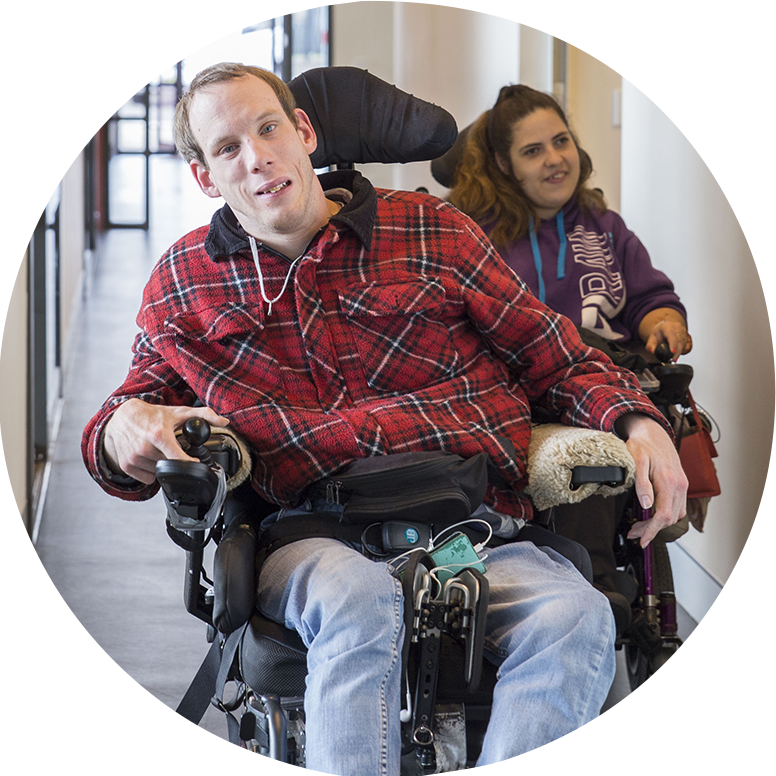A physical disability is a condition that affects a person’s mobility, physical capacity, stamina or dexterity.
NADO supports people with physical disabilities to live a valued, meaningful and independent life. Some of these physical disabilities are described below:

Acquired Brain Injury
Brain Injury is the “multiple disabilities arising from damage to the brain acquired after birth”.
It results in deterioration in cognitive, physical, emotional or independent functioning. Common causes of Brain Injury can include:
- Accidents/Trauma – Traumatic Brain Injury occurs as the result of some external force being applied to the brain.
- Stroke – Strokes usually occur as the result of a haemorrhage or blockage to the blood vessels that supply blood to the various regions of the brain.
- Tumour – Tumours cause damage to the surrounding brain tissue and structures as they grow within the brain.
- Infection – Bacterial or viral infections can lead to an inflammation of the brain covering (meningitis) or the brain tissue itself (encephalitis).
- Poisoning/Toxins – Alcohol acts as a toxin and the long-term misuse of alcohol can cause damage to brain tissue.
- Hypoxia/Anoxia – Refers to reduced or, complete stopping of the flow of oxygen to the brain leading to injury to brain tissue. Can be caused by overdoses, failed hangings, or near drowning.
- Degenerative Neurological Diseases – conditions including Huntington’s Disease, Parkinson’s Disease and Alzheimer’s Disease are caused by abnormal changes in brain cells in particular regions of the brain.
For more information, please visit Brain Injury Australia
Cerebral Palsy (CP)
CP is a developmental disability that results from damage to or dysfunction of the developing brain.
The impairments associated with cerebral palsy are non-progressive but permanent. Varying degrees of disability related to functional mobility (movement and posture), daily living skills, communication and socialisation skills results from these impairments.
Cerebral refers to the brain. Palsy can mean weakness or paralysis or lack of muscle control.
Although CP is a permanent condition, as a person learns and grows and practices skills, more control over movement may be achieved. No two individuals are affected in the same way, some people may suffer minor motor skill problems, while others may be totally physically dependent.
With effort, it is possible to maximise function and minimise the disadvantage a person experiences as a consequence of disability or society and create new opportunities for greater participation and enhanced quality of life for people with CP.
With CP, messages from the brain may be sent to the rest of the body at the wrong time, to the wrong place, or not at all. Just like crossed telephone lines, the result is a confused muscle. Some people appear clumsy; for others, the muscles shake and jerk at the wrong time, or become completely relaxed.
For more information, please visit, Cerebral Palsy Australia
Epilepsy
Epilepsy is a neurological chronic disorder which creates recurrent seizures due to the electrical events that occur in the brain.
Epilepsy is the fourth most common neurological disorder and it can affect people of all ages. Epilepsy is characterised by unpredictable seizures which can cause unusual movements, odd feelings or sensations, a change in a person’s behaviour, or cause them to lose consciousness.
There are many different types of epilepsy and the nature and severity of seizures experienced by people can vary widely. Some people can control their seizures with medication and the condition is not lifelong for every person. For more information, please visit Epilepsy Australia
Multiple Sclerosis (MS)
MS is a condition of the central nervous system, interfering with nerve impulses within the brain, spinal cord and optic nerves.
MS occurs when the myelin sheath – protective tissue around nerve fibres in the body which becomes damaged, causing random patches or scars. The scars can interfere with messages sent through the central nervous system, affecting the brain, optic nerves, and spinal cord.
The symptoms of MS are quite varied, but can include fatigue, loss of motor control, tingling, numbness, visual disturbances, memory loss, depression, and cognitive difficulties.
The progress and severity of MS can be difficult to predict – it may progress very slowly for one person, but develop quickly in another. For more information, please visit MS Australia
Muscular Dystrophy
Muscular Dystrophy is a neuromuscular, genetic disorder which results in the progressive deterioration of muscle strength and function.
The most common form in childhood is Duchenne Muscular Dystrophy. There are many other types of neuromuscular disorders, affecting people of all ages. While most forms of Muscular Dystrophy occur in babies or children, some others appear in late adolescence or adulthood.
Signs and symptoms can be quite varied, however, can include difficulty walking, trouble breathing or swallowing restriction in joint motion, and heart and other organ problems.
Symptoms of the most common type of the disease appear in childhood, however, others do not become apparent until middle age or older.
For more information, please visit Muscular Dystrophy Association Australia
Spina Bifida
Spina Bifida is a birth defect in which a developing baby’s spinal cord fails to develop properly.
It occurs when a developing baby’s spinal cord fails to develop or close properly while in the womb. There are three forms of Spina Bifida which is as follows:
Spina Bifida Occulta
This mildest form results in a small separation or gap in one or more of the bones (vertebrae) of the spine. Because the spinal nerves usually aren’t involved, most children with this form of Spina Bifida have no signs or symptoms and experience no neurological problems.
Visible indications of Spina Bifida Occulta can sometimes be seen on the newborn’s skin above the spinal defect, including:
- An abnormal tuft of hair
- A collection of fat
- A small dimple or birthmark
Many people who have Spina Bifida Occulta don’t even know it unless the condition is discovered during an X-ray or other imaging test done for unrelated reasons.
Meningocele
In this rare form, the protective membranes around the spinal cord (meninges) push out through the opening in the vertebrae. Because the spinal cord develops normally, these membranes can be removed by surgery with little or no damage to nerve pathways.
Myelomeningocele
Also known as open Spina Bifida, Myelomeningocele is the most severe form — and the form people usually mean when they use the term “Spina Bifida.”
In myelomeningocele, the baby’s spinal canal remains open along several vertebrae in the lower or middle back. Because of this opening, both the membranes and the spinal cord protrude at birth, forming a sac on the baby’s back.
Neurological impairment is common, including:
- Muscle weakness of the legs, sometimes involving paralysis
- Bowel and bladder problems
- Seizures, especially if the child requires a shunt
- Orthopedic problems — such as deformed feet, uneven hips and a curved spine (scoliosis)
For more information, please visit Mayo Clinic
Spinal Cord Injury
A traumatic spinal cord injury may happen because of a sudden blow or cut to the spine.
A spinal cord injury often causes permanent loss of strength, sensation, and function below the site of the injury. Rehabilitation and assistive devices allow many people with spinal cord injuries to lead productive, independent lives. Treatments include drugs to reduce symptoms and surgery to stabilise the spine.
For more information, please visit Spinal Cord Injuries Australia
Tourette Syndrome (TS)
TS is a neurological disorder, which most often begins between the ages of 2 and 21 and lasts throughout life.
TS is NOT degenerative and people with TS can expect to live a normal lifespan. Tourette Syndrome is a neurological disorder which involves involuntary and repetitive vocalisations, sounds, and movements called tics. These tics are neurological, not behavioural – which means a person with TS cannot control them.
Vocal tics can include sniffing, throat clearing, tongue clicking, grunting, or more rarely blurting out socially unacceptable words or phrases. Motor tics can include repetitive eye blinking, shoulder shrugging, nose twitching, head jerking, facial expressions, touching objects or other people, spinning around, imitating someone else’s actions or jumping up and down.
For more information, please visit Tourette Syndrome Association of Australia


